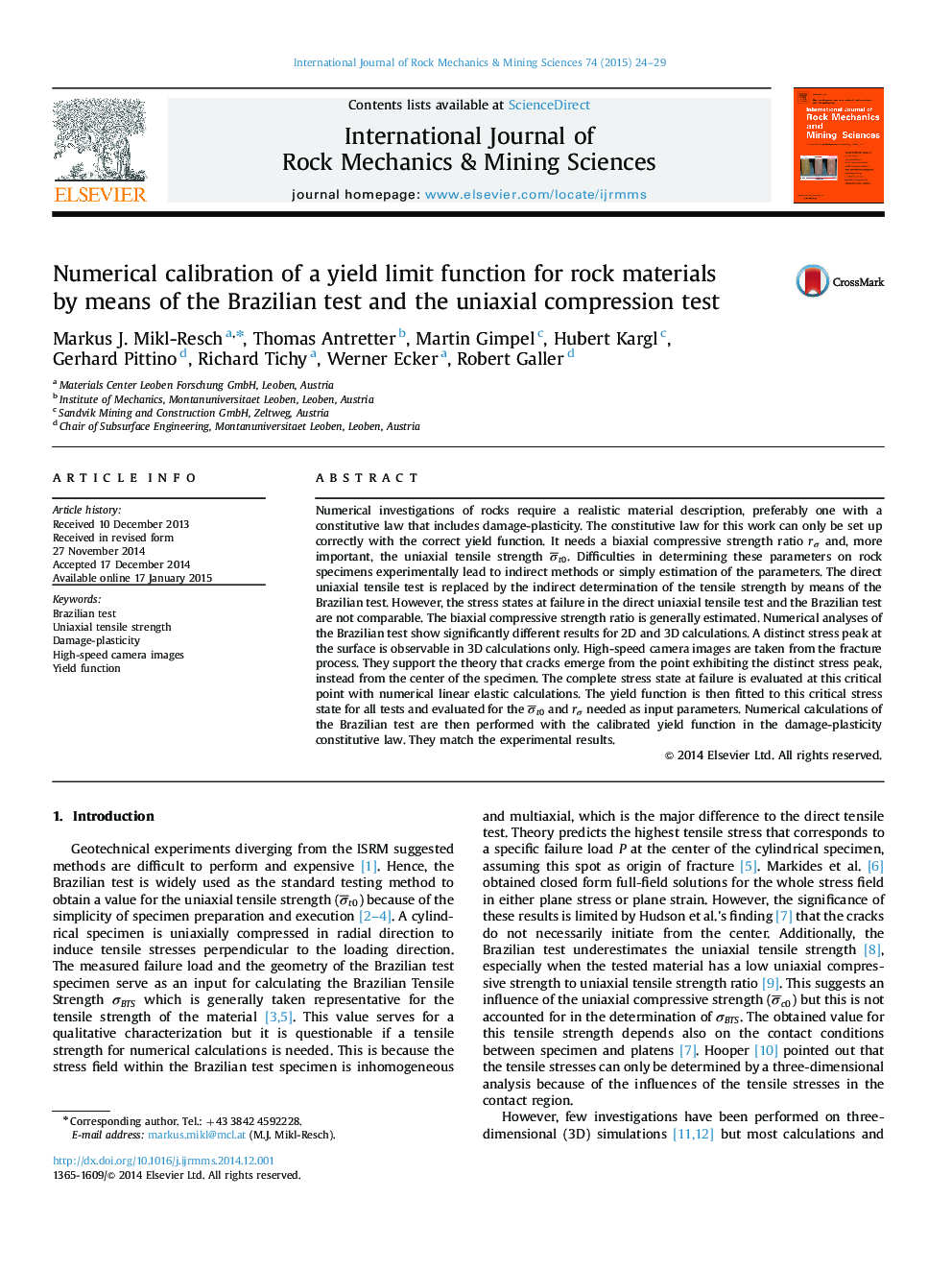| کد مقاله | کد نشریه | سال انتشار | مقاله انگلیسی | نسخه تمام متن |
|---|---|---|---|---|
| 809570 | 1468695 | 2015 | 6 صفحه PDF | دانلود رایگان |
• A yield function for FE calculations is calibrated with the Brazilian test and uniaxial compression test.
• Cracking in the Brazilian test does most likely not originate from the center.
• The Brazilian tensile strength underestimates the uniaxial tensile strength and is not suitable for FE calculations.
• The proposed calibration method allows calculations in agreement with the experimental results.
Numerical investigations of rocks require a realistic material description, preferably one with a constitutive law that includes damage-plasticity. The constitutive law for this work can only be set up correctly with the correct yield function. It needs a biaxial compressive strength ratio rσrσ and, more important, the uniaxial tensile strength σ¯t0. Difficulties in determining these parameters on rock specimens experimentally lead to indirect methods or simply estimation of the parameters. The direct uniaxial tensile test is replaced by the indirect determination of the tensile strength by means of the Brazilian test. However, the stress states at failure in the direct uniaxial tensile test and the Brazilian test are not comparable. The biaxial compressive strength ratio is generally estimated. Numerical analyses of the Brazilian test show significantly different results for 2D and 3D calculations. A distinct stress peak at the surface is observable in 3D calculations only. High-speed camera images are taken from the fracture process. They support the theory that cracks emerge from the point exhibiting the distinct stress peak, instead from the center of the specimen. The complete stress state at failure is evaluated at this critical point with numerical linear elastic calculations. The yield function is then fitted to this critical stress state for all tests and evaluated for the σ¯t0 and rσrσ needed as input parameters. Numerical calculations of the Brazilian test are then performed with the calibrated yield function in the damage-plasticity constitutive law. They match the experimental results.
Journal: International Journal of Rock Mechanics and Mining Sciences - Volume 74, February 2015, Pages 24–29
